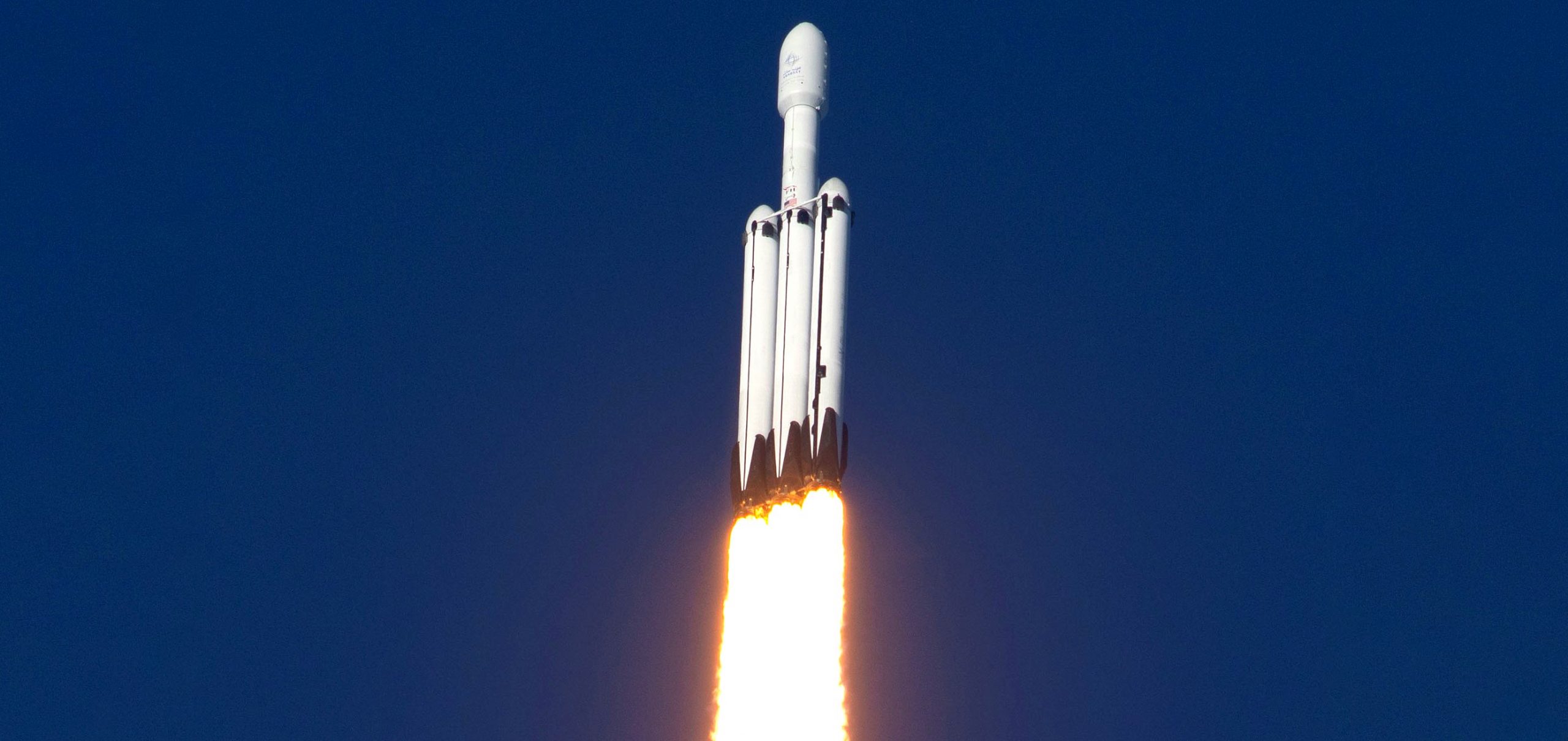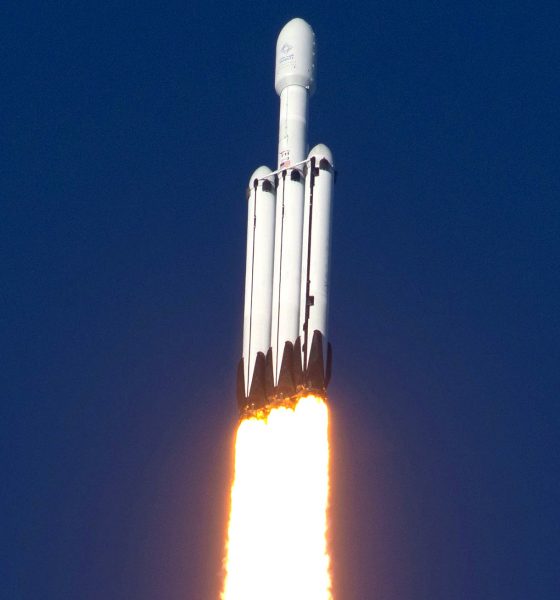

News
SpaceX’s Falcon Heavy likely to launch NASA telescope after ULA skips competition
On the heels of what will likely be NASA’s most significant telescope launch for at least a decade, the space agency appears to be about to select the launch provider for its next most expensive space telescope – a contract that SpaceX seems all but guaranteed to win.
Tory Bruno, CEO of the United Launch Alliance (ULA), revealed on February 15th that SpaceX’s chief competitor won’t even attempt to compete for the contract to launch NASA’s Nancy Grace Roman Space Telescope (NGRST; formerly the Wide-Field Infrared Survey Telescope or WFIRST). Named after Nancy Roman, who played a foundational role in the creation and launch of NASA’s famous Hubble Space Telescope, the Roman Space Telescope could potentially be the second most expensive NASA spacecraft launched this decade.
WFIRST was made possible when the US National Reconnaissance Office (NRO) chose to donate one of two Hubble-class spy telescopes it had merely sitting around and gathering dust to NASA in the mid-2010s. From a mechanical perspective, the telescope will be very similar to Hubble. However, in the decades since HST’s launch, electronics and sensor technology have dramatically improved, allowing NASA to pack instruments capable of simultaneously imaging 100 times the field of view HST is capable of into a similar package.
Additionally, instead of the Hubble’s primary focus on ultraviolet and visible wavelengths, the Roman Space Telescope will observe in infrared wavelengths, making it a perfect complement to the brand-new James Webb Space Telescope (JWST), which is also exclusively focused on the infrared spectrum. Combined, they could operate hand in hand, with NGRST acting like a surveyor or scout and JWST enabling a much closer look at noteworthy discoveries. Additionally, thanks to the inclusion of an unprecedentedly capable in-space coronagraph instrument, NGRST will be able to block out the light of stars, making it a game-changing tool for exoplanet discovery – exoplanets that JWST may then be able to image in even more detail with its much larger mirror.

The telescope must first be built and then make it to orbit, however. Expected to weigh at least 4.2 tons (~9250 lb) and designed to operate at the L2 Sun-Earth Lagrange point hundreds of thousands of miles from our planet, only large American rockets are an option for the $4.3 billion Roman Space Telescope’s launch. After a recent delay, that launch has slipped to no later than May 2027. However, NASA appeared to be in the final stages of selecting a launch provider as of late last month [PDF], meaning that the space agency may not be able to take advantage of potential launch options planned to debut over the next few years.
That includes Blue Origin’s New Glenn and Relativity Space’s Terran R. However, even ULA’s Vulcan Centaur rocket appears to have been precluded due to rules that generally mean that only rockets certified for NASA launches today can be awarded a contract to launch a high-value spacecraft. As such, while there is a good chance that one or all of the above rockets will have launched repeatedly and potentially achieved NASA LSP certification by 2027, they have little hope of winning a 2022 competition for a 2027 launch when facing a competitor with a rocket that’s already certified.

In this case, that competitor is SpaceX, whose Falcon Heavy rocket is certified for even the most risk-averse NASA LSP (Launch Service Program) missions. In just the last two years, SpaceX has won contracts to launch NASA’s Psyche asteroid explorer (Aug 2022), VIPER Moon rover (Q4 2023), GOES-U weather satellite (Q2 2024), Europa Clipper (Q4 2024), and the PPE and HALO modules of the Gateway lunar space station (Q4 2024). In fact, because ULA has already promised all of its remaining Delta IV Heavy and Atlas V rockets and because ULA’s Vulcan and Blue Origin’s New Glenn have yet to launch at all, SpaceX is actually the only US launch provider with rockets that are both available for future NASA launches and certified to launch and compete for them.
For some upcoming missions, it’s possible that NASA will wait much closer to the launch date in order to ensure a more competitive environment, but that’s not always possible if the design of an exceptionally sensitive payload (like a large space telescope) must be optimized for a specific vehicle. In the case of the Roman Space Telescope, that means that without a major departure from established rules and norms, SpaceX’s Falcon Heavy rocket is all but guaranteed to win the contract to launch it.

Elon Musk
Elon Musk’s X will start using a Tesla-like software update strategy
The initiative seems designed to accelerate updates to the social media platform, while maintaining maximum transparency.

Elon Musk’s social media platform X will adopt a Tesla-esque approach to software updates for its algorithm.
The initiative seems designed to accelerate updates to the social media platform, while maintaining maximum transparency.
X’s updates to its updates
As per Musk in a post on X, the social media company will be making a new algorithm to determine what organic and advertising posts are recommended to users. These updates would then be repeated every four weeks.
“We will make the new 𝕏 algorithm, including all code used to determine what organic and advertising posts are recommended to users, open source in 7 days. This will be repeated every 4 weeks, with comprehensive developer notes, to help you understand what changed,” Musk wrote in his post.
The initiative somewhat mirrors Tesla’s over-the-air update model, where vehicle software is regularly refined and pushed to users with detailed release notes. This should allow users to better understand the details of X’s every update and foster a healthy feedback loop for the social media platform.
xAI and X
X, formerly Twitter, has been acquired by Elon Musk’s artificial intelligence startup, xAI last year. Since then, xAI has seen a rapid rise in valuation. Following the company’s the company’s upsized $20 billion Series E funding round, estimates now suggest that xAI is worth tens about $230 to $235 billion. That’s several times larger than Tesla when Elon Musk received his controversial 2018 CEO Performance Award.
As per xAI, the Series E funding round attracted a diverse group of investors, including Valor Equity Partners, Stepstone Group, Fidelity Management & Research Company, Qatar Investment Authority, MGX, and Baron Capital Group, among others. Strategic partners NVIDIA and Cisco Investments also continued support for building the world’s largest GPU clusters.
News
Tesla FSD Supervised wins MotorTrend’s Best Driver Assistance Award
The decision marks a notable reversal for the publication from prior years, with judges citing major real-world improvements that pushed Tesla’s latest FSD software ahead of every competing ADAS system.

Tesla’s Full Self-Driving (Supervised) system has been named the best driver-assistance technology on the market, earning top honors at the 2026 MotorTrend Best Tech Awards.
The decision marks a notable reversal for the publication from prior years, with judges citing major real-world improvements that pushed Tesla’s latest FSD software ahead of every competing ADAS system. And it wasn’t even close.
MotorTrend reverses course
MotorTrend awarded Tesla FSD (Supervised) its 2026 Best Tech Driver Assistance title after extensive testing of the latest v14 software. The publication acknowledged that it had previously criticized earlier versions of FSD for erratic behavior and near-miss incidents, ultimately favoring rivals such as GM’s Super Cruise in earlier evaluations.
According to MotorTrend, the newest iteration of FSD resolved many of those shortcomings. Testers said v14 showed far smoother behavior in complex urban scenarios, including unprotected left turns, traffic circles, emergency vehicles, and dense city streets. While the system still requires constant driver supervision, judges concluded that no other advanced driver-assistance system currently matches its breadth of capability.
Unlike rival systems that rely on combinations of cameras, radar, lidar, and mapped highways, Tesla’s FSD operates using a camera-only approach and is capable of driving on city streets, rural roads, and freeways. MotorTrend stated that pure utility, the ability to handle nearly all road types, ultimately separated FSD from competitors like Ford BlueCruise, GM Super Cruise, and BMW’s Highway Assistant.
High cost and high capability
MotorTrend also addressed FSD’s pricing, which remains significantly higher than rival systems. Tesla currently charges $8,000 for a one-time purchase or $99 per month for a subscription, compared with far lower upfront and subscription costs from other automakers. The publication noted that the premium is justified given FSD’s unmatched scope and continuous software evolution.
Safety remained a central focus of the evaluation. While testers reported collision-free operation over thousands of miles, they noted ongoing concerns around FSD’s configurable driving modes, including options that allow aggressive driving and speeds beyond posted limits. MotorTrend emphasized that, like all Level 2 systems, FSD still depends on a fully attentive human driver at all times.
Despite those caveats, the publication concluded that Tesla’s rapid software progress fundamentally reshaped the competitive landscape. For drivers seeking the most capable hands-on driver-assistance system available today, MotorTrend concluded Tesla FSD (Supervised) now stands alone at the top.
News
Elon Musk’s Grokipedia surges to 5.6M articles, almost 79% of English Wikipedia
The explosive growth marks a major milestone for the AI-powered online encyclopedia, which was launched by Elon Musk’s xAI just months ago.

Elon Musk’s Grokipedia has grown to an impressive 5,615,201 articles as of today, closing in on 79% of the English Wikipedia’s current total of 7,119,376 articles.
The explosive growth marks a major milestone for the AI-powered online encyclopedia, which was launched by Elon Musk’s xAI just months ago. Needless to say, it would only be a matter of time before Grokipedia exceeds English Wikipedia in sheer volume.
Grokipedia’s rapid growth
xAI’s vision for Grokipedia emphasizes neutrality, while Grok’s reasoning capabilities allow for fast drafting and fact-checking. When Elon Musk announced the initiative in late September 2025, he noted that Grokipedia would be an improvement to Wikipedia because it would be designed to avoid bias.
At the time, Musk noted that Grokipedia “is a necessary step towards the xAI goal of understanding the Universe.”
Grokipedia was launched in late October, and while xAI was careful to list it only as Version 0.1 at the time, the online encyclopedia immediately earned praise. Wikipedia co-founder Larry Sanger highlighted the project’s innovative approach, noting how it leverages AI to fill knowledge gaps and enable rapid updates. Netizens also observed how Grokipedia tends to present articles in a more objective manner compared to Wikipedia, which is edited by humans.
Elon Musk’s ambitious plans
With 5,615,201 total articles, Grokipedia has now grown to almost 79% of English Wikipedia’s article base. This is incredibly quick, though Grokipedia remains text-only for now. xAI, for its part, has now updated the online encyclopedia’s iteration to v0.2.
Elon Musk has shared bold ideas for Grokipedia, including sending a record of the entire knowledge base to space as part of xAI’s mission to preserve and expand human understanding. At some point, Musk stated that Grokipedia will be renamed to Encyclopedia Galactica, and it will be sent to the cosmos.
“When Grokipedia is good enough (long way to go), we will change the name to Encyclopedia Galactica. It will be an open source distillation of all knowledge, including audio, images and video. Join xAI to help build the sci-fi version of the Library of Alexandria!” Musk wrote, adding in a later post that “Copies will be etched in stone and sent to the Moon, Mars and beyond. This time, it will not be lost.”








